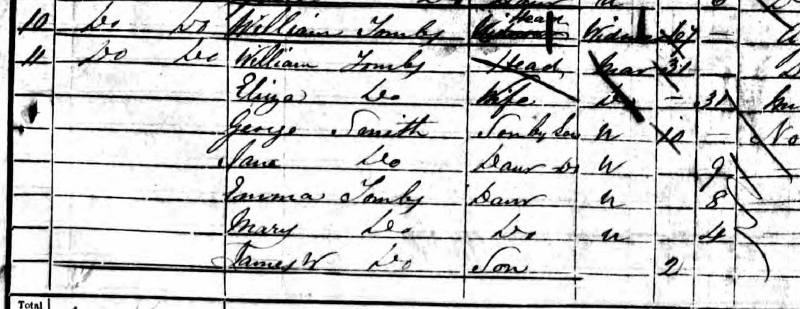The term "son-in-law" to mean stepson was quite widespread in the 19th Century.
I've come across it on many census entries, although stepson is the more common useage later in the century (or just plain "son", even if they have a different surname).
From UK Census Confusions:
In the censuses the term 'in-law' meant 'related by marriage' as it does today, however the key difference is that in the 19th century it was applied to children which is not the case now. A son whose mother re-marries would today be called a 'step-son', however he may be recorded on the census as 'son-in-law'.
Also in the US, from the Connecticut State Library:
Remember that meanings of words have changed over time. As examples, "brother" could once mean "brother-in-law"; "cousin" usually was a generic term for any relative; "son-in-law" could mean what we know today as "stepson"; "in-law", in the past could mean anyone related by marriage; "father-in-law" and "mother-in-law" could mean what we now know as step-parents.
It's possibleCensus indexes can be used to search for examples of this usage. On FindMyPast.co.uk, using the advanced search for the 1851 census, enter a last name, select son-in-law in relationship to head of household, and sort by age (youngest first).
If the surname is very common you may need to filter by county to avoid the search timing out.
Results are like this (name, birthyear, age, gender, birthplace):
SMITH, John 1844 7 M Eton Buckinghamshire
SMITH, William J 1843 8 M Aylesbury Buckinghamshire
SMITH, George 1841 10 M Wycombe Buckinghamshire
SMITH, John 1841 10 M Wycombe Buckinghamshire
SMITH, William 1838 13 M Wycombe Buckinghamshire
Lots of young son-in-laws! Drilling down to the details you'll find most are not married. Following the wife back the children will usually have the surname of her first husband (or her maiden name, if she was not married when they were born). Daughters in Law are exactly the same.
Unfortunately the terms and conditions of Findmypast.co.uk don't allow me to reproduce any part their transcripts or images here, so I switched to Ancestry for the household containing the George Smith above:

In that family, it appears both the son-in-law and daughter-in-law are earlier children (and unmarried).
It would be interesting to see how many son-in-laws there are (under say 16 years old) in each of the censuses, but the search on Findmypast.co.uk isn't flexible enough for that (requires a last name or place, times out with too many results).
It's clear though that in 1851 it wasn't rare for son-in-law to be used as a term for stepson. There are 23 son-in-laws aged under 16 with a surname of "Smith" in Middlesex alone in 1851, compared to only 9 step-sons.